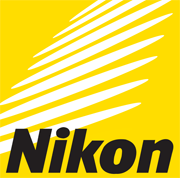
Will Ritter, Max A. Schindler and his son, Max Schindler are our guests this week.
Show produced by Katherine Caperton.
Original Air Date: January 19, 2013 on SiriusXM “POTUS” Channel 124.
Polioptics airs regularly on POTUS on Saturdays at 6 am, 12 noon and 6 pm.
Follow us on Twitter @Polioptics Listen to the show by clicking on the bar above.
Show also available for download on Apple iTunes by clicking here
Our first guest, Will Ritter, is the man Governor Mitt Romney entrusted to run his advance operation in 2012.
This wasn’t Will’s first rodeo though, he has served as Mitt’s body man in the 2008 cycle. That’s when Will and I first met, on the trail in Florida in 2007. I was the Senior Producer for ABC’s This Week with George Stephanopoulos and we had Mitt and Ann Romney for their first joint interview. It was a very big deal for the campaign and the show. Will and I stayed on site buildingthe interview set from nothing until 2am. The broadcast was excellent and from that point forward Gov Romney, his wife and Will Ritter were on my radar. Somehow I knew I would work them all again in the future.

Will Ritter, Director of Operations and Advance for Romney Ryan 2012, behind his desk at campaign HQ in May 2012.
I didn’t meet Will again face-to-face until late April of 2012. The primaries were over and it was time to turn to the business of winning the general election. My former boss in the George W. Bush White House, Ed Gillespie, was now a Senior Advisor to the campaign and he asked me to come join the team. But what my participation would look like depended on solely what the Advance Director wanted. Lucky for me it was Will Ritter in charge. As you can see from the picture, Ritter was in command behind his desk and in front of that American flag. He had a clear sense of what needed to be done and what the candidate wanted to achieve on the trail.
Our interview with Will picks up at that point – the transition to the big game. Will had done every job imaginable as an Advance man up to that point. He was a leader who had “been there and done that.” But as you will hear, building an operation large enough to compete with Obama for America was a huge lift. Despite the loss on election day, the track record of the Romney Advance Team was and is amazing. The next generation of Republican Advance Men (and Women) took a masters level class at the knee of Will Ritter.

Mitt Romney with Paul Ryan after introducing him as his running mate, for the 2012 presidential election, in Norfolk, Virginia on August 11, 2012.
I don’t want to give it away… but listen for Will’s never before disclosed details surrounding the VP announcement event in Norfolk, VA. The USS Wisconsin was the perfect backdrop for the reveal of Rep. Paul Ryan’s selection to be Mitt Romney’s running mate. But — as NBC Dateline always used to say in their promos – “what happened behind the scenes will shock you.”
These days Will Ritter isn’t taking too much of a rest. He is now the President & CEO of Beacon Operation Security Services LLC, a highly specialized executive protection and full service security firm. BOSS, as they are known in the business, caters to high profile private citizens including company executives, politicians, dignitaries, professional athletes and celebrities. I suspect that Will and his team at BOSS will back on the front lines of American politics very soon.
###
Segment number two is a family affair. Josh King and I are joined by TV newsman Max Schindler and his son, TV newsman Max Schindler.

Left to Right: Max Schindler, Max A Schindler, Adam Belmar at POTUS studios in Washington DC 1/17/13
Senior takes us back through 50 years of high stakes assignments, from directing coverage of the return of JFK’s remains to Andrews AirForce Base on November 22, 1963, to Presidential Inaugurals, which, in 1997,began to feature “Schindler Blue” as the backdrop carpet for the Inaugural Address. Junior, a superior talent in his own right, brings us inside the second inaugural of President Barack Obama. Both men together makes this conversation one of the best we’ve ever had here on PoliOptics.
The genesis of my love affair with visual communication in politics centered around a handful of TV news shows. Max A Schindler was the director of one of the most important ones, NBC’s Meet The Press.
For decades Max was the one who crafted the nation’s view of what was most important in politics. He was our eyes and ears. The man whose vision became our own. I hope you will take the time to hear father and son in this espisode. Their stories and experience are our own.
One very important visual element to complement the audio. See below on the left, the red carpet behind Bill Clinton during his first inaugural address in 1993 and on the right, the “Schindler Blue” carpet in 1997. Schindler Blue is part of the institution of Washington D.C. now and you will see it again on Monday behind President Obama. Hail to the Chief!

LEFT: The final use of red carpet behind a president on the inaugural podium in 1993. RIGHT: The first appearance of “Schindler Blue” in 1997
And as a special treat – for the historical record — here, in his own words is the written story of “Schindler Blue.” Just in case the audio of Max isn’t quite enough for you!
The View From The Control Room #13: “Schindler Blue”
Since the inauguration of Lyndon Johnson in 1965 I have been involved in the television coverage of Presidential Inaugurations. My involvement, either unilaterally for NBC or for the Pool, has almost always been with the ceremonies at the Capitol.
Although we had been televising this event in color for many years it wasn’t until 1977 that I noticed how awful the red carpet that was used to cover the entire inaugural platform was. I suggested to the Presidential Inaugural Committee (PIC) and the Joint Congressional Inaugural Committee (JCIC) that they should change it to blue. I told them that the steps in the middle of the platform formed the background for the President’s Inaugural Address. They said, “you can’t have blue carpet…you have to roll out the red carpet for dignitaries”. I explained that red was probably the worst background and least flattering color for people. It gave them a ruddy complexion…blue by contrast was very flattering for flesh tones. I was unable to convince them.
I tried again through the years with the succeeding PIC and JCIC committees but was unable to convince any of them with my arguments. I always got the…“you have to roll out the red carpet for dignitaries”. Finally in 1993, at the first inauguration of Bill Clinton I spoke to one of his closest advisors, Harry Thomason, who was a Hollywood television producer. Harry agreed with me about the blue carpet and went with me to the PIC and JCIC. He said that the Presidents Committee wanted blue carpet. Unfortunately, they said, the red carpet had already been purchased.
Four years later, when Bill Clinton was re-elected, I called Harry Thomason the day after the election and reminded him about the blue carpet. He called the various inaugural committees and told them he wanted blue carpet and that they should talk to me about the exact color. The committee sent me a number of carpet swatches of various nap and shades of blue. I picked the one that I thought would be the best and sent the samples back. They purchased that color blue and referred to it as “Schindler Blue”.
On January 20th, 1997, after 20 years, I finally was able to prove my point about the blue background. If you look at Clinton’s first and second inaugural speech you can see the comparison.
The blue carpet has been used at every inauguration since then.

Max brought his keepsake gift from Harry Thomason – carpet remnant of the original Schindler Blue from the 1997 Clinton Inaugural.

 About TELION: a comprehensive public relations, media affairs and event management consulting firm offering clients a wide range of support services. Telion partners with corporations, associations, government, political and religious entities to successfully assist in the management of their meetings, conferences, incentive programs and special events. Their expertise in communication strategies, crisis management, digital media, VIP advance operations & logistical support is unsurpassed. George Gigicos, TelionCorp, Boca Raton, Florida 33231, 561-400-3604.
About TELION: a comprehensive public relations, media affairs and event management consulting firm offering clients a wide range of support services. Telion partners with corporations, associations, government, political and religious entities to successfully assist in the management of their meetings, conferences, incentive programs and special events. Their expertise in communication strategies, crisis management, digital media, VIP advance operations & logistical support is unsurpassed. George Gigicos, TelionCorp, Boca Raton, Florida 33231, 561-400-3604.










 During my White House days, which spanned 1993 to 1997, those short question-and-answer sessions drove me nuts. They would take place in the Oval Office while welcoming a visiting head of state; in the Cabinet Room while meeting with Congressional leaders; on the rope line while walking out to Marine One or at the end of a presidential event on the road; at the door of his limousine after a dinner in Washington; or, indeed, while watching a football game at Doe’s Eat Place in Little Rock.
During my White House days, which spanned 1993 to 1997, those short question-and-answer sessions drove me nuts. They would take place in the Oval Office while welcoming a visiting head of state; in the Cabinet Room while meeting with Congressional leaders; on the rope line while walking out to Marine One or at the end of a presidential event on the road; at the door of his limousine after a dinner in Washington; or, indeed, while watching a football game at Doe’s Eat Place in Little Rock.
